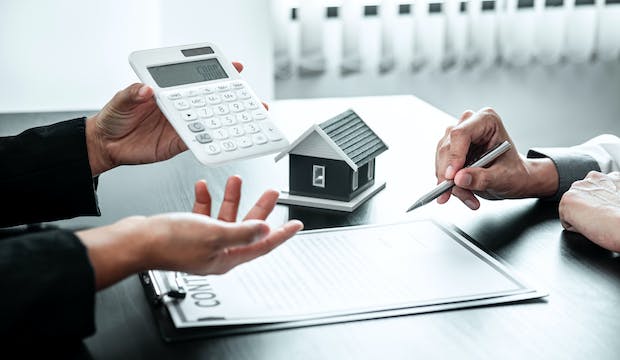The Indian financial markets have been growing rapidly in recent years, attracting domestic and international investors. With new technologies and the ease of access to information, more and more people are looking to actively participate in the markets. However, the first step towards becoming a successful trader is to have a trading account.
However, there are multiple factors to consider, such as the type of account, brokerage charges, and regulatory requirements. In this article, we will guide you through opening a trading account and provide you with an understanding of the various aspects involved.
What is a Trading Account?
A trading account is a crucial tool for individuals looking to participate in the stock market and buy and sell securities. It allows investors to access the stock market and execute their trades.
Unlike a Demat account, which is primarily used for holding securities in electronic form, a trading account focuses on facilitating the actual buying and selling of these securities. While a Demat account is a safe storage space for an investor’s securities, a trading account allows them to place orders, monitor market movements, and seamlessly execute trades.
By understanding the distinction between these two accounts, investors can effectively manage their investments and make informed decisions to pick the best trading account in India.
Documents Required for Opening a Trading Account
To open a trading account, certain standard documents are required to complete the registration process. These documents serve as proof of identity, address, and income for certain types of trading. Here are the specific documents that are typically required:
- Identity Proof: A valid PAN card is mandatory to open a trading account as it is a unique identification number for tax purposes.
- Address Proof: Proof of address is essential to verify the account holder’s residential address. Accepted documents for address proof include a passport, driving license, voter ID card, or Aadhaar card.
- Additional Identity Proof: Some brokers may request an additional identity proof document and a PAN card. A passport or driving license can be submitted as additional proof of identity.
- Additional Documents for F&O Trading: If you plan to engage in Futures and Options (F&O) trading, additional documents may be required. These may include income proof, such as salary slips, bank statements, or income tax returns, to verify your financial eligibility for such trading activities.
Steps Required to Opening a Demat Account
- Choosing a Stockbroker
Factors to consider while selecting a broker include:
- Brokerage rates: Compare the brokerage charges levied by different brokers and determine if they align with your trading volume and frequency. Look for transparent pricing structures and any additional charges that may apply.
- Services provided: Evaluate the range of services the broker offers, such as access to research reports, trading tools, educational resources, and customer support. Consider if these services align with your trading requirements.
- Type of broker: Assess your trading style and preferences to determine whether a traditional or discount broker suits your needs.
- Comparing Brokerage Rates and Services
When comparing brokerage rates and services offered by different brokers, it is important to consider individual traders’ specific needs and preferences.
Traditional brokers generally offer comprehensive services, including research reports, investment advice, and personalised assistance. These additional services can benefit those requiring expert guidance and analysis.
However, assessing whether the cost of these services justifies their value for your trading strategies is essential. On the other hand, discount brokers provide low brokerage rates and online platforms for execution. This option may be more suitable for traders who prefer a self-directed approach and are experienced in making independent trading decisions.
- Initiating Contact for Account Opening
To initiate contact to open a trading account with the best trading account, exploring the broker’s online methods is recommended for a seamless experience.
Most brokers offer convenient options such as service numbers and online chat support to assist potential clients. So, inquire about the broker’s service promptness through these channels to gauge their responsiveness and efficiency. Prompt and reliable customer service is crucial in ensuring a smooth account opening process and addressing any concerns or queries that may arise.
- Filling the Account Opening and KYC Form
Follow these clear steps to ensure a smooth and hassle-free experience:
- Personal Details: Begin by filling in your personal information accurately. This typically includes your full name, date of birth, contact details, and permanent address. Double-check the inputted information for any errors before proceeding.
- Bank Details: Provide your bank details for fund transfers and withdrawals. Include the name of your bank, account number, and IFSC code. Ensure that the information is correct to prevent any transaction-related issues.
- Uploading Documents: The broker will require certain documents for verification purposes. These often include proof of identity (such as a PAN card, Aadhaar card, or passport), proof of address (such as a utility bill or bank statement), and a recent photograph. Scan or take clear pictures of these documents and upload them securely onto the platform.
- E-Signing: You must electronically sign the application form to authenticate your account opening request. Follow the provided instructions to e-sign the form securely. This step ensures that all the information provided is legally binding and valid.
- Application Verification Process
Once you have submitted your account opening form and provided the necessary documents, the broker’s team will carefully review and verify the information. Understanding the significance of matching the application details with the provided documents is important. Any discrepancies or inconsistencies may lead to application rejection.
During the verification process, the broker’s team will meticulously compare the information provided in the application form with the supporting documents.
- Receiving Trading Account Details
Once your trading account is successfully opened and the verification process is complete, you will receive your login credentials for accessing your account.
Conclusion
Opening a trading account in India may seem tricky, but it isn’t. By following the necessary steps and seeking guidance from a trusted broker, individuals can access the Indian markets and begin their investment journey. So don’t hesitate to take the necessary steps and start your trading journey today.



